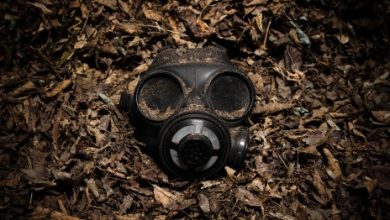
2BR02B by Kurt Vonnegut is a short story whose title alludes to the famous phrase from English playwright William Shakespeare’s play Hamlet— “to be, or not to be.” This science fiction-based story deals with the dynamic relationship between life and death by inquiring into the fairness and authority of the people in power in deciding who’ll live or die. 2BR02B was originally published in Worlds of If Science Fiction (1962)
Kurt Vonnegut Jr. was an American author renowned in the world of satirical fiction where his works revolve around his take on wars, politics, and religion, especially World War II and its implicit repercussions. The humorist approach he adopts in his writings renders his works a stern and dark tone of comedy that aims to expose the irrational in the rational.
2BR02B | Summary
The story opens with an idealistic description of a place that is free of prisons, slums, asylums, poverty, wars, and diseases. Since the U.S. population is stable at 40 million, a man named Edward K. Wehling is the only man waiting for his wife to give birth at a hospital in Chicago. At the age of fifty-six, he is a “stripling” in a population where the average age is one hundred and twenty-nine. The hospital’s redecoration work is in progress and matches Wehling’s “colorless” appearance. A cynical two hundred-year-old man is painting a mural he is not fond of. Aging is invisible and conquered in this setting that the narrator describes. The mural depicts men and women performing gardening activities in a garden that is neat and proper. A hospital orderly sings a song about death and comments on the lifelike quality of the mural which the painter denotes as “‘The Happy Garden of Life.’” Hospital’s chief obstetrician Dr. Benjamin Hitz is a handsome man. The mural is supposed to be filled with the faces of key people from the hospital staff. The distaste painter exhibits towards his own creation compels the orderly to suggest to him a number “2BR02B” which is a helpline number of municipal gas chambers of the Federal Bureau of Termination for those who do not wish to live anymore.
A woman named Leora Duncan from the Federation enters the premises in all purple which is similar to that in the painting. She compares the painting to “heaven or something.” The painter decides on a suitable body to paint her head on for the mural and decides on the one next to Dr. Hitz. Further, the disclosure of a law stating the exchange relationship between the birth of a newborn and a volunteering death creates a complex scenario after the birth of triplets. Since the Wehlings have been able to arrange only one volunteer, the father does not sound quite happy about the birth. Dr. Hitz expounds on the need for population control which might seem unreasonable to many. Wehling wishes to have all three children as well as desires his grandfather to live. He shoots Dr. Hitz, Leora Duncan, and himself in an attempt to make a room for all his three children to live peacefully in obedience to the scientific law. The painter witnessing the scene from above the ladder contemplates the human atrocities in life like starvation, poverty, and plague and decides to shoot himself too with Wehling’s revolver but fails. He dials the number “2BR02B” and reserves a spot as a volunteer to die and pave way for the future generations.
2BR02B | Analysis
The story is distinct from what Vonnegut’s contemporaries wrote in the sci-fi genre. While many works in literature do operate on the utopian and dystopian binary, this particular piece conjoins the two. There is a third-person narrator who unfolds the action chronologically and in a simplistic manner. The paragraphs are relatively short ranging from single sentences to a set of five. Division of sections also contributes to the smooth processing of the narrative as each section is preoccupied with one or two characters and their engagement with each other to allow a deeper insight into them.
The premise of the story stands on the law concerning population control in the States where a government-sanctioned institution called the Federal Bureau of Termination signs up volunteers for death to create a healthy and liveable space for future generations. The futuristic setting of the story where aging does not ensure death and the latter is a self-inducing phenomenon, wars, prisons, asylums, diseases—basically, everything that can lead to accidental death, is a highly idealistic view of the world which the author contradicts himself as the story progresses towards the climax. Welhing killing Dr. Hitz, Leora Duncan, and himself by the means of a gunshot can be looked at with a critical lens to ponder over the need for the father-to-be to carry a weapon into the hospital premises. Was he anticipating his own death to make a room for his baby in this world or already planned to shoot down others to enable his triplets to survive the law without losing anybody dear to them? There are no clear explanations provided by the author and hence a sort of ambiguity surrounds the multiple deaths that the story ends with, including that of the painter. Earlier, it was established that death could only come to a person as a voluntary act but the deaths of multiple characters as an act of suicide and murder at the end debunks that possibility. The painter who resorted to dying through any medium other than the gas chambers stands in an ironic light when he signs up for a reservation at the Bureau. Living for two hundred years, the painter had seen his share of life and realized the disparity and despair that lies behind all scientific developments. Life is demanding and the inextinguishable nature of these demands drives the artist to death, though in obedience to his nation’s law by volunteering.
Reference to the gas chambers surely has its ties to the extermination of Jews by the Nazis during the Holocaust during the advent of World War II. However, the author employs the Nazi dominance over the fate of the Jews in a contrast to the willing entry into the chambers by the people in the story. His advertence to the gas chambers poignantly remarks on the involuntary deaths of the Jews at the hands of Nazi Germany who did not deem them worthy enough to live on this planet. This deciding role— the authority to choose is what highlights Vonnegut as a brilliant satirist. This in turn becomes relevant to our contemporary world as well where certain government laws dominate our life and we have to abide by them. However, in the case of this story, it can be argued, that laws are formulated for a just cause i.e. population expansion which is a concern due to the scarcity of resources in the world. But the plan of action adopted to implement the laws is unfair. A human is born with the right to choose to live as long as its body allows him/her to but by giving as well as taking this right from its people in the story, the U.S. government is manipulating their lives, which for that matter all governments are notoriously famous for.
The government attempts to turn the U.S. into a beautiful and healthy place for future generations by implementing population balancing and control laws that mirror the mural the painter is working on in the hospital. With the Garden of Eden-like imagery, the painting exhibits everything neat, prim, and proper. But art imitates reality, as Plato famously said and thus the painting is not the reality but an expression or more like a wish for a similar reality. The painter being an artist himself acknowledges this truth and points to the “foul dropcloth” as the perfect representation of life and reality to him. Life is not the beautiful painting of organized colors but the dirty cloth with bits of mixed-up colors here and there that lie rotten on the floor.
The conundrum of life that Welhing exhibits vividly in the story is similar to that of Shakespeare’s Hamlet in his soliloquy from which the story borrows its title but in a unique style. The combination of numbers and alphabets pronounce as the most famous line of the soliloquy with “0” (nought) in American English. Hamlet in “to be, or not to be” ponders over the dilemma of living a life in its misery or choosing to die by the means of suicide with an uncertainty of what’s in store for us beyond death. The story too reflects this quandary where it has become difficult for people like Welhing to choose their self-interest over national goals and sustainability. Vonnegut puts this question to his readers and allows them to examine a human’s right to reproduce in a world that is already facing the crisis of overpopulation is death the only means to curb this rising problem or is there any viable way out?
2BR02B | Characters
Dr. Benjamin Hitz – The Chief Obstetrician at the Chicago hospital, he is a law-abiding doctor who believes in the rationale behind the scientific law of population control which requires a volunteer to die whenever a child is born. He is two hundred and forty years old, still handsome and charming. Due to his insistence on following the principle of exchange to Welhing, he is shot down by the latter and contributes involuntarily a space for future generations.
Leora Duncan – She is a woman from the Federal Bureau of Termination who arrives at the hospital as a part of a formal procedure requiring her to take along the volunteer to the gas chamber. She admires Dr. Hitz and like him is also a strict follower of the system. Welhing kills her as well to reserve a spot for his second child.
Hospital Orderly – He is a chirpy man who sings a death song while marking his entry in the story. Often, he banters with the painter who does not share similar opinions on the painting he is working on. He even suggests the painter dial the number “2BR02B” if he does not wish to live anymore.
The Muralist – He is the painter who is painting “The Happy Garden of Life” on the walls of the Chicago hospital where key people from the hospital staff would have their faces as portraits on it. However, his idea of life differs from what his painting reflects and assures the hospital orderly that his death would not be an act of volunteering. But ironically, towards the close of the story, he ends up dialing the helpline to sign up as a volunteer for death.
Edward K. Wehling – He is a middle-aged man who waits for the birth of his triplets at the hospital but not with the joyous sentiments a father should perhaps be filled with. The law requiring a sign-up of a volunteer for death in an exchange for a newborn child troubles him as he wishes to have all his triplets without sacrificing the life of his grandfather. Thus, he ends up killing Dr. Hitz, Leora Duncan, and himself in order to fulfill his wishes. He is the only rebel in the story who attempts to stand against the prevalent laws.
2BR02B | Literary Devices
Symbolism
“The Happy Garden of Life” is a painting with men and women in white planting seeds and in purple pulling out weeds symbolizing the functioning of the world about the human population. The humans dressed in white represent doctors who bring new life to this earth through medical delivery procedures. On the other hand, the people in purple attire may symbolize the Nazis (due to their purple triangle logo) who killed the Jews in gas chambers and eliminated them like weeds from the world population.
The seal of the Service Division as an “eagle perched on a turnstile” on Leora Duncan’s bag is symbolise the main action of the story through the mechanical operation of the turnstile which at a time only allows one person to come in and out.
Metaphor
The hospital orderly addresses the painter as “a gloomy old duck” when he expresses his scorn toward his own art.
“The Happy Garden of Life” as a painting represents the contemporary United States of America which is being taken care of through its population control schemes one birth against one death like the garden where new seeds are sowed and the weeds are plucked out.
Allusion
The narrator makes a Biblical allusion to “the color of grapes on Judgment Day” when describing the purple attire of Leora Duncan from the Federal Bureau of Termination. In the Bible, the custom of the judgment day comprises wicked ones being gathered together to be trampled upon like an act of producing grape juice by trampling grapes in a winepress.
The second allusion is to the Greek mythological figure of Zeus when Dr. Hitz’s portrait in the mural is compared to him as “tanned, white-haired, [and] omnipotent.”
Humour
The painter interacts with the woman from the Federal Bureau of Termination in a humoristic fashion: “‘They told me I was supposed to pose for some picture,’ she said. ‘My name’s Leora Duncan.’ She waited. ‘And you dunk people,’ he said. ‘What?” she said. ‘Skip it,’ he said.”
Satire
Leora Duncan describes her work demurely. “What she did was make people comfortable while she killed them.” The revelation is a satirical remark on the nature of her job and largely on all such professions.
Irony
Edward K. Wehling’s empty “Hooray” stands ironic to the happy moment of the arrival of his triplets.
The painter in the beginning sections of the story assures the hospital orderly that his death “won’t be at the Sheepdip” which is a nickname for the gas chambers that the Federal Bureau of Termination employs to render death to its volunteers. But towards the end of the story, he signs up for the post of a volunteer after contemplating the “mournful puzzle of life” which includes war, plague, and starvation.
As a medical practitioner, Dr. Hitz is responsible for saving lives but he is the person who set up the first gas chamber in Chicago for the people to volunteer for death.
Simile
“Without population control, human beings would now be packed on this surface of this old planet like drupelets on a blackberry.”
“…people insisted on their right to reproduce like jackrabbits”
Sarcasm
The author’s sarcastic take on the Federal Bureau of Termination is observed in Dr. Hitz correction of himself by giving “the municipal gas chambers their official title, a title no one ever used in conversation…i.e. ‘Ethical Suicide Studios’…”




